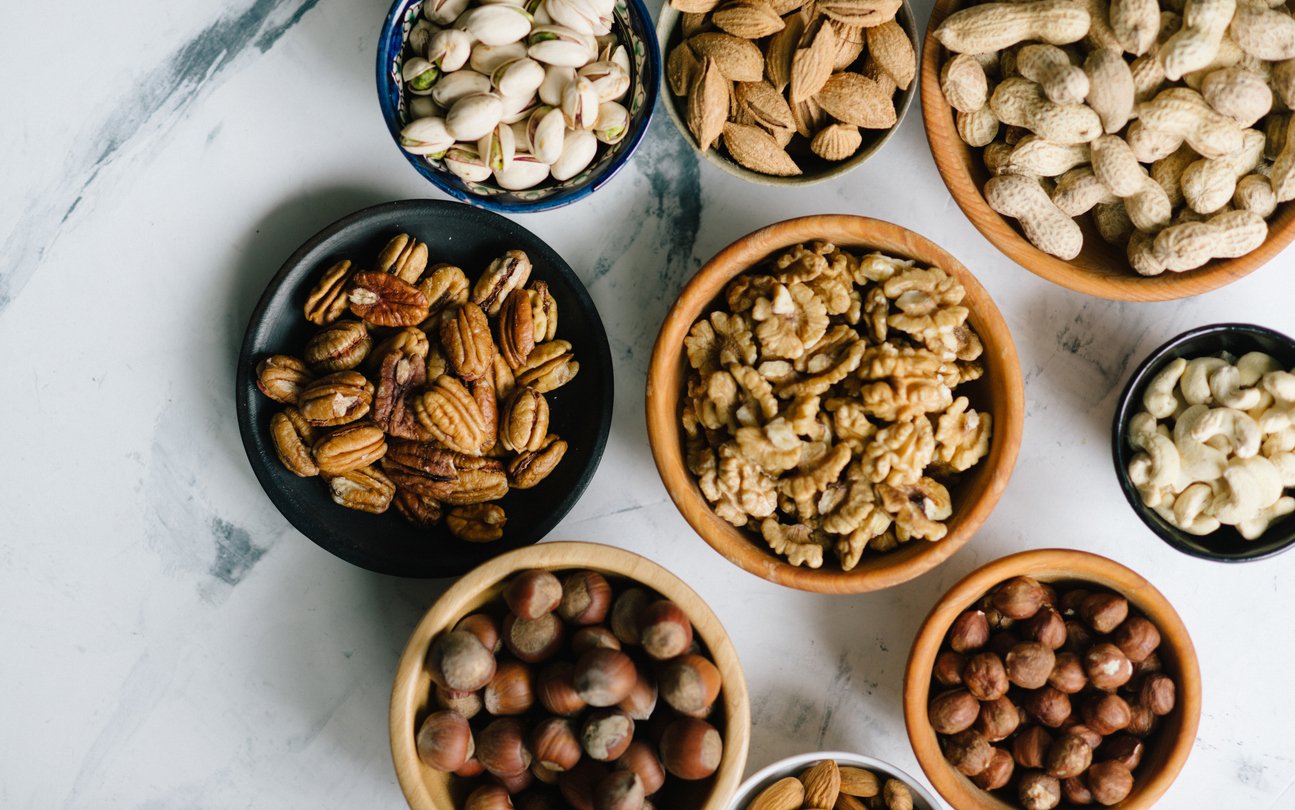In 1765, the British parliament enacted the Stamp Act, which levied high taxes on American colonists. The measure passed largely because its key opponent, William Pitt the Elder, was debilitated by a severe flareup of gout.
Unfortunately for the British, the Stamp Act turned out to be a huge mistake. Instead of putting the Americans in their place, it unified the 13 colonies in opposition to British rule under the slogan “No Taxation Without Representation.”
Eight years later, Pitt was again indisposed due to a gout attack. This time, parliament defied his wishes by levying a heavy tax on tea imports to the American colonies, triggering the “Boston Tea Party,” a shocking act of defiance that hastened the Revolutionary War.
Gout may not always lead to such world-shaking events, but it’s still a big deal to those who suffer from it. The pain, swelling, heat, and eventual disfigurement that can result from gout attacks can also lead to chronic osteoarthritis and reduced mobility.
In fact, gout is the most prevalent cause of chronic inflammatory arthritis in the United States. Globally, about 1–4% of people suffer from gout.
It’s also one of the most well-documented diseases throughout history. Our knowledge of gout, its causes, and its famous victims precedes colonial America by thousands of years.
The Disease of Kings

The earliest written descriptions of the condition come from ancient Greece, where it was known as “podagra” or the “foot-trap” due to its tendency to strike the joint of a big toe first. Hippocrates (the fifth century BC “Let food be thy medicine” guy) referred to it as the “unwalkable disease.”
Some Greek physicians prescribed cures that one might consider extraneous (and extreme), such as a shock from a torpedo fish (an electric ray that can put out around 220 volts).
But gout was known as the “disease of kings” for a reason: few commoners could afford the rich diet and copious amounts of alcohol that were associated with the condition.
These days, though, many people in industrialized countries can consume diets far richer than those of past royals. As a result, gout is also prevalent among us common folk.
In this article, we’ll examine what causes gout and the role of diet and lifestyle in managing and preventing painful gout attacks.
What Is Gout?
Gout is a type of inflammatory arthritis that causes joint pain and swelling. It typically begins with the first metatarsophalangeal joint (also known as the big toe) and then can spread to other joints, including the ankles, knees, wrists, and elbows. Symptoms include pain, swelling, redness, and heat.
Gout develops from deposits of needle-shaped crystals in and around the joint. The crystals are made of monosodium urate (MSU, with apologies to fans and alumni of Michigan State and Morgan State Universities), which form when the uric acids in blood rise above normal thresholds.
Uric acid comes from urate, which comes from molecules called purines. Purines, found in your body’s tissues and many foods, are key DNA and RNA building blocks.
When too many purines are in your body, either because too much is made or ingested or because too little is removed, urate builds up in your blood. When it has nowhere else to go, it turns into those nasty needle-shaped crystals. Unfortunately, they end up in places of slow blood flow, such as the joints and the kidneys.
The four phases of gout are:
- Asymptomatic hyperuricemia (too much uric acid in the blood)
- Acute gouty arthritis (a painful flare-up)
- Intercritical gout (time between flare-ups when the disease is still progressing)
- Chronic tophaceous gout (“tophi” are chalky deposits that can form visible lumps, especially on the hands and feet)
Who Is at Risk for Gout?

Most people experience their first gout attack sometime between the ages of 30 and 50. The condition can worsen with age, with higher incidences occurring after age 80 when it can affect up to 10% of men and 6% of women.
In rare cases, younger people can develop gout if they have a genetic variant that gets in the way of purine metabolism.
Gout is much more common in men than in women. In industrialized countries, it occurs in 3–6% of men and 1–2% of women. And women are usually not at risk for gout attacks until after menopause, as estrogen helps flush out excess uric acid.
Other risk factors include eating lots of fast food and foods rich in purines (see below for details), not exercising, and being obese or having metabolic syndrome.
Gout is also associated with other conditions. These include chronic kidney disease (either one can lead to the other), psoriasis (possibly due to increased blood levels of uric acid due to the high turnover of skin cells with the disease), and cancer, possibly because high uric acid levels are also a risk factor for some cancers, especially urological cancers like those of the bladder, kidneys, and (in men) prostate.
How Is Gout Treated?
Treatment is important because gout is one of those conditions that can get worse over time, even if it’s mostly asymptomatic. Untreated or undertreated gout may eventually turn into that fourth phase, chronic tophaceous gout, which can destroy joints permanently.
During acute flare-ups, the primary objective of gout treatment is to bring down inflammation and reduce pain and other symptoms. One way to do this is by icing the affected joint, which can reduce swelling and numb the pain.
Anti-inflammatory drugs, such as NSAIDs (e.g., ibuprofen or naproxen) and colchicine (which inhibits white blood cells from migrating to the gout site, thereby reducing inflammation) are also used.
Other pharmaceutical treatments include corticosteroids, medications that block uric acid production, and those that improve uric acid removal.
However, while pharmaceutical treatments may be helpful in some cases, the best gout treatment is prevention.
In the long term, the goal is to reduce serum urate levels. There are many ways to do this, including lowering the consumption and production of purines and increasing the rate at which uric acid leaves the body.
Most people require lifestyle changes to treat the underlying causes. Diet is the lever with the highest odds of preventing future attacks — more on this below.
The Role of Diet in Gout Management and Prevention

As we’ve seen, high uric acid levels (also known as hyperuricemia) cause gout, and uric acid is released when purines are broken down. Most purines in your blood are produced in your body, but they’re also in several different categories of foods.
If you eat heavily from those categories, you may overload your body with too many purines. If your body can’t get rid of the purines fast enough, that can lead to gout.
Purine levels aren’t the only factor, though. While high purine levels are a primary driver of high uric acid levels, a risk factor for gout, most people with high uric acid levels don’t develop gout. Only about 5% do, which suggests that gout may have more to do with a genetic predisposition or other factors (such as kidney disease).
Following a strict low-purine diet will lower uric acid levels by at most 30% (since most of the purines in your body are made by your body). For some people, though, that decrease may be enough to prevent attacks or reduce their frequency and severity.
Lowering your uric acid levels has other benefits, too. In addition to reducing your risk of gout, lower uric acid levels are also associated with reduced risk of cardiovascular disease, kidney disease, type 2 diabetes, fatty liver disease, and metabolic syndrome.
Beverages and Foods Highest in Purines
There isn’t reliable data on the exact amounts of individual purines in most foods — especially cooked foods. In general, it’s agreed that these are the foods highest in purines:
- Organ meats (liver, kidney)
- Certain seafood (sardines, anchovies, mackerel)
- Red meats and game meats
- Alcohol (especially beer, which can raise uric acid by 6.5% all by itself)
- Sugar-sweetened beverages (since fructose in the absence of fiber and other nutrients increases serum uric acid levels)
Rather than focusing exclusively on purine elimination, aiming for a healthier dietary pattern may be more effective. Doing so can improve your health in general and may be more effective in reducing the risk of and treating gout than just eliminating or reducing purine-rich foods.
The DASH diet, for example, has been shown to lower serum uric acid compared to a standard Western diet, making it a promising tool for gout management.
A plant-based diet that adheres to the DASH principles of whole plant foods, limited saturated fat, and limited added sugar may be even more effective.
Can a Plant-Based Diet Help with Gout?

Since the greatest amounts of dietary purines are in animal products like organ meats and certain types of seafood, it makes sense that a plant-based diet can help reduce uric acid levels.
But hold on — some plant foods are also pretty high in purines; lentils and sea vegetables, for example. Can a gout-fighting plant-based diet include them? Some people worry that high-purine legumes and veggies may pose as much risk as liver and anchovies.
Interestingly, studies have consistently shown a lower mean uric acid serum concentration in vegetarians than in nonvegetarians. And a 2019 review article suggests that plant-based diets are associated with reduced risk of gout.
That may be because of some important differences in the types of purines found in plant vs. animal sources. Although more research is needed, it appears that the purines found in animals, adenine and hypoxanthine, are more cryogenic (that is, they produce more uric acid) than guanine and xanthine, the purines found in plants.
There’s more than just purine levels to consider when identifying a gout-busting diet. It’s likely that the fiber and vitamins delivered by a health-promoting plant-based diet support overall health and help the body manage uric acid levels more effectively.
Note the “health-promoting” in the previous paragraph: there’s a big difference between healthy and unhealthy plant-based diets. The key factor is whether the majority of the diet consists of whole foods (yay) or processed foods (much less yay; actually more uh-oh).
Whole-food plant-based diets can also help prevent gout by impacting other health markers. They may indirectly prevent gout by improving insulin sensitivity, reducing overweight and obesity, and providing fiber and antioxidants that fight chronic inflammation.
Foods That Help Prevent and Manage Gout
So there are two important qualities we’re looking for in foods that can help prevent and manage gout: low in purines and anti-inflammatory.
Whole Grains

A 2024 article reported on the results of a huge study examining the relationship between the consumption of different foods and the incidence of gout. Researchers followed over 120,000 US men and women for an average of 22 years. They discovered two categories of plant-based foods that were meaningfully associated with less gout: whole grains and tea and coffee.
Another study compared how a diet rich in whole grains vs. one with red meat changed gut microbiota. The inclusion of whole grains increased the appearance of specific strains of good gut bacteria that were protective against gout. It also lowered obesity markers, while the red meat diet increased serum uric acid creatinine, increasing the risk of gout.
Tea and Coffee

A British study replicated the finding that tea and coffee are potent anti-gout beverages. This study (following 447,658 participants for an average of 13 years) found that people who drank more than six cups of tea or three cups of coffee — caffeinated or decaffeinated, it made no difference — daily had a significantly lower risk of gout compared to non-drinkers.
The benefits of coffee appear to be linked specifically to its ability to reduce inflammation.
Fruits

Fruits are also your friends when it comes to defeating gout. Tart cherries, in particular, have been shown to reduce uric acid levels — both as a whole food and in the form of tart cherry juice.
While some fruits high in fructose may temporarily increase serum uric acid levels, they don’t necessarily pose a problem because of the many beneficial compounds in fruit (like vitamin C, potassium, and flavonoids, among others), which can help lower uric acid levels and reduce inflammation.
Vegetables

Vegetables can also be powerful gout-busting allies. A 2019 study found that increasing vegetable consumption may help reduce the risk of developing gout. While certain vegetables like spinach and asparagus contain purines, a diet rich in a variety of vegetables nevertheless appears to lower gout risk.
Pine Nuts and Walnuts

Some nuts and seeds may lower gout risk by reducing uric acid levels. In a 2021 study, researchers found that eating more pine nuts and walnuts was linked to a lower risk of hyperuricemia in young adults. (Other nuts and seeds, like peanuts, melon seeds, and cashews, didn’t show the same benefit.)
Plant-Based Proteins

A 2021 study out of China measured serum uric acid levels in almost 40,000 rural adults and correlated these results with a food intake questionnaire. Researchers found that legume consumption (relatively high in purines) was nevertheless associated with less hyperuricemia. The more beans people ate, the healthier their uric acid levels were.
While overconsumption of animal protein is associated with more gout, eating an abundance of plant-based protein in legumes is associated with reduced risk. Even soy, which doesn’t seem to reduce serum uric acid levels in clinical trials, is associated with a lower risk of gout in population studies.
Vitamin C-Rich Foods

Among all the individual nutrients in plant foods that may help prevent gout, vitamin C gets special mention. It succeeds on two counts: first, it can help your kidneys excrete more uric acid, which lowers serum uric acid levels and can reduce the risk of gout attacks.
Second, vitamin C acts as a powerful antioxidant, which can help reduce oxidative stress and inflammation associated with gout.

Other Lifestyle Changes to Prevent or Reverse Gout
While diet may be king in preventing and treating the “disease of kings,” there are a number of other lifestyle strategies that can help with gout, including:
- Maintaining a healthy weight
- Engaging in regular physical activity (including low-impact exercises like swimming and walking, when done at a moderate level of exertion)
- Managing stress (to reduce inflammation)
- Adequate hydration (water, plus electrolytes after profuse sweating — when I first read the study, I thought it said “profuse swearing,” which raised a whole lot of questions)
- Limiting alcohol consumption
- Stopping smoking (particularly among men who used both regular and e-cigarettes)
Gout-Friendly Recipes
Looking for delicious ways to support your health while bringing down your uric acid levels and preventing or managing gout? These four plant-based recipes are a whole day’s worth of delicious meals designed to help — while providing amazing flavor and nutrition.
Each dish includes ingredients known to reduce uric acid levels and combat inflammation, making it as nourishing as it is tasty.
Whether you’re in the mood for a hearty meal or a refreshing smoothie, these recipes offer a perfect balance of flavor and health benefits to keep you feeling great.
Breakfast: Toasted Pistachio and Cherry Overnight Oats

Our Toasted Pistachio and Cherry Overnight Oats aren’t just a tasty way to start your day — they’re also packed with ingredients that can help manage uric acid levels, making them helpful for anyone dealing with gout. The oats and chia seeds are high in fiber, which can support kidney health and help clear out excess uric acid. Cherries, both sweet and tart, are known for their anti-inflammatory powers and can naturally lower uric acid levels to ease gout symptoms. Topped with crunchy pistachios, which provide healthy fats, this recipe offers a delicious and easy way to keep you feeling good!
Lunch: Orange Lentil Soup With Anise and Coriander

Get ready for a bowl of vibrant, zesty goodness with this Orange Lentil Soup With Anise and Coriander! Packed with bold citrus from fresh orange juice and zest and warm spices like star anise and coriander, it’s as delicious as it is nourishing. Red lentils provide a low-purine, plant-based protein, while spices and vitamin C-rich oranges help reduce uric acid levels and support gout relief. This aromatic soup is the perfect blend of flavor and health benefits!
Dinner: Bean Chili in Delicata Squash Boats

If you thought plant-based chili couldn’t get more exciting, wait until you try Bean Chili in Delicata Squash Boats! This comforting meal is delicious and great for those managing gout. The nutrient-rich beans, stuffed inside sweet, caramelized delicata squash, offer a powerful combination of plant-based protein and fiber to help keep uric acid levels in check. With the added benefits of kale, tomatoes, and warming spices like cumin and chili powder, this dish is packed with nutrition that supports overall health and may reduce inflammation. Perfect for a cozy, satisfying meal that’s as good for you as it is flavorful!
Snack or Beverage: Banana Tahini Coffee Smoothie

Isn’t it nifty that coffee can help improve symptoms of gout? It’s a rich source of polyphenols, specifically chlorogenic acids, which fight free radicals and reduce oxidative stress, making it a powerful antioxidant-packed ingredient. Plus, regular coffee consumption may lower uric acid levels, which can be beneficial for managing gout. In this Banana Tahini Coffee Smoothie, you get that health boost along with a creamy blend of banana, nutty tahini, and nutrient-rich cauliflower. Add a sprinkle of sweet spices and hemp seeds, and you have an ultra-satisfying, energy-boosting smoothie.
Gout-Proof Your Diet and Lifestyle
Gout is a painful condition that can significantly impact daily life and lead to other harmful chronic conditions over time. However, it can be prevented, managed — and even reversed — through a combination of dietary changes and lifestyle modifications.
While medications are often part of the treatment plan, adopting a low-purine diet rich in whole plant-based foods can help reduce uric acid levels and inflammation. Lifestyle changes such as maintaining a healthy weight, staying hydrated, managing stress, and quitting smoking support gout prevention.
By embracing these holistic measures, individuals can effectively manage gout and improve their overall health.
Tell us in the comments:
- Have you ever had a gout attack? If so, what was it like?
- What gout-busting foods are your favorites?
Featured Image: iStock.com/spukkato



